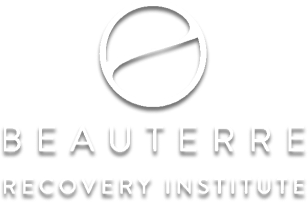Substance use disorder (SUD), sometimes called drug use disorder, is a psychiatric diagnosis of problematic drug use, including drug addiction. SUDs are assessed on a scale from mild to moderate to severe. Within this framework, full-blown, compulsive addiction to drugs or alcohol is classified as severe substance use disorder. According to the Substance Abuse and Mental Health Services Administration (SAMHSA), SUDs are in evidence when drug and/or alcohol use “causes clinically and functionally significant impairment,” in one’s health, career, academic performance, or family life.
Diagnosing Addiction
Neuroscience and genetic studies have demonstrated that addiction is a brain disease leading to compulsive, self-destructive behavior. Research has advanced our scientific understanding of addiction rapidly. As a result, mental health authorities attempted to properly redefine the disease of addiction and also how it is diagnosed. Diagnostic criteria are crucial, with real-world health impacts and financial implications. Is the patient sick or not sick? Covered by insurance or paying out of pocket?
Authorities revised the psychiatric “bible” for the diagnosis addiction and other forms of mental illness. The American Psychiatric Association (APA) published The Diagnostic and Statistical Manual of Mental Disorders, Fifth Edition, or DSM-5, in 2013. DSM-5 put the diagnostic criteria for problematic drug use under the blanket term of substance use disorder. This change reflected the latest research and represented a considerable shift from the status quo.
Drug Abuse and Chemical Dependency: Outmoded Terms
The previous edition of the APA’s diagnostic manual, the DSM-IV, was in use since the early Nineties. DSM-IV described a linear progression of the disease from drug abuse to chemical dependence. (Notably, the word “addiction” does not appear in the DSM-IV.) Both abuse and dependence were classified as drug overuse problems.
The distinction between the two was based on whether the overuse was intentional or pathological. The DSM-IV listed more extensive criteria for each, but put simply: if the user voluntarily overused drugs, that was diagnosed as drug abuse. If the user persisted in compulsive use despite repeated attempts to stop, the diagnosis was one of chemical dependency.
Author David Sheff described the DSM-5’s then-upcoming changes in his 2013 book Clean:
The fifth edition of the DSM . . . to be published in May of 2013, essentially eliminates drug abuse as a stage separate from addiction. The new definition is nuanced but generally states that anyone who continues to use drugs in spite of harmful consequences has a substance [use] disorder and is an addict, on a scale from mild to moderate to severe. That is, addiction is a continuum that includes all persistent and dangerous use.
Some within treatment and addiction research circles criticized the changes the DSM-5 imposed. Would college binge drinkers begin to, as journalist Maia Szalavitz put it, “adopt an addict identity”? Would they mischaracterize their mild problem as a hopeless fate?
Substance Use Disorder Criteria and Severity Levels
Others defended the new continuum criteria. To these experts, the old abuse/dependency progression was overly simplistic and arbitrary. It could even put users in jeopardy, by providing a false sense of security: I’m not chemically dependent, I can quit anytime.
Researcher Tom McLellan told Sheff DSM-IV criteria ordered and weighted drug overuse symptoms in a way for which there is “no basis” in fact. Certain symptoms were once almost exclusively associated with those formally diagnosed as being “chemically dependent.” But research demonstrated both so-called “drug abusers,” like addicts, experienced cravings, potential for relapse, and increasing tolerance.
As a result, under the DSM-5 criteria for substance use disorder, McLellan observed, the symptoms are simply counted, “and people with more of them have a more severe diagnosis.” There are 10 or 11 criteria for substance use disorder (depending on the substance used), and the severity is as follows:
- Mild: 2-3 criteria are positive
- Moderate: 4-5 criteria are positive
- Severe: 6 or more criteria are positive
Big “A” Addiction versus Little “a” addiction
Truth to tell, the new diagnostic criteria have been slow to take hold in the public mind. References to the old conception of addiction as a progressively downward spiral from drug abuse to chemical dependency are common. It’s important to meet people where they are to provide perspective and context. Only then is it possible to advance their understanding.
So experts like Carleton Erickson, in his recent book The Science of Addiction, 2nd Edition (2018) discuss addiction using two sets of diagnostic criteria. He feels he must include the DSM-IV terms of drug abuse and chemical dependency. They provide a frame of reference, he writes, “until the scientific and clinical communities become familiar with the new terminology” in the DSM-5.
Professor Erickson even makes an interesting distinction between “big A Addiction” and “little a addiction” in his text. This allows readers to readily discern the difference between chemical dependency/severe SUD (big “A” Addiction) and drug abuse/mild-to-moderate SUD (little “a” addiction).
Robust Assessments for Substance Use Disorder
Those in treatment and recovery and their loved ones must learn about the nature of addiction. Of course, with new evidence science challenges contemporary understanding.
What’s important is to take the threat of addiction to our collective well-being very seriously. Severe substance use is compulsive, tricking the brain into believing it cannot go without the substance. However, the sense of control over one’s overuse can come and go, while other symptoms of substance use disorder, like tolerance, remain consistent.
Every case is different, but the potential risks along the addiction continuum are the same: job loss, legal trouble, injury or death. Early treatment, even in moderate stages, helps prevent the kind of damage caused by severe substance use disorder.
If you or a loved one would like a professional, robust assessment for substance use disorder, please call Beauterre Recovery Institute today, or use the contact form below. We can diagnose the problem and provide the tools to help you find your way to a healthier life.
 Beauterre Recovery Institute
Beauterre Recovery Institute
